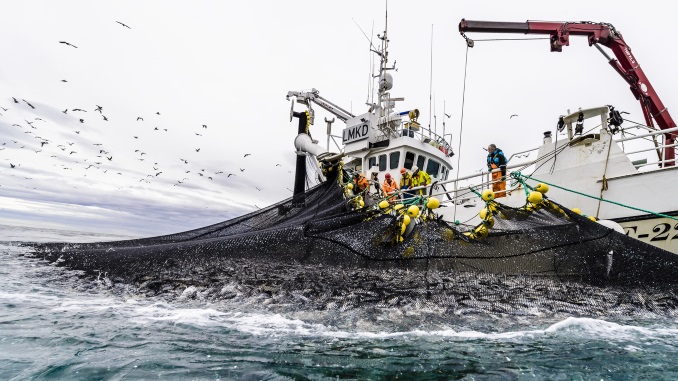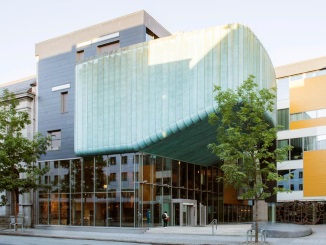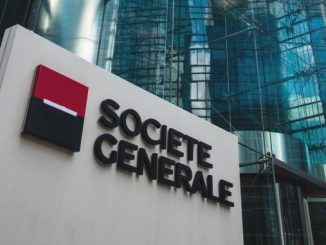
SpareBank 1 SMN has established a green bond framework and could sell the first senior unsecured green bond benchmark in euros from a Norwegian bank, while offering investors a rare opportunity to gain exposure to the “life below water” Sustainable Development Goal.
SpareBank 1 SMN published its green bond framework on Wednesday, shortly after Sunndal Sparebank on 1 February became the first savings bank in Norway to issue a green bond, a NOK75m (EUR7.65m) three year senior unsecured deal. The only previous green senior unsecured bond from a Norwegian bank is understood to be a Nkr1bn (EUR102m) five year from DNB in 2015.
A Norwegian bank is yet to issue a senior unsecured green bond benchmark in euros and SMN could be first after having announced its framework on Wednesday, with ING as green structuring advisor. The savings bank is a regular issuer in euros – it sold a EUR500m five year in June 2018, for example, and bankers have suggested its inaugural green bond could well be in euros.
Trond Barikmo, treasury manager at SpareBank 1 SMN, declined to comment on the nature or timing of the bank’s likely first green bond.
He told Sustainabonds that the establishment of the framework reflects the broad trend towards a more sustainable finance industry as well as the bank’s CSR strategy, with the ultimate goal of supporting the Paris Agreement.

SMN’s framework has two eligibility categories: loans backed by green buildings; and loans to corporates with eco-efficient and circular economy-adapted products, production technologies and processes.
Some 52% of the NOK8.4bn (EUR860m) green loan portfolio is related to sustainable fisheries aquaculture and agriculture, with 85% of this focused on Marine Stewardship Council (MSC)-certified fisheries.
“Since we are located along the coast, we have quite a bit of fisheries in our portfolio, so we looked at different options to utilise these in our green bond framework,” said Barikmo. “We found the certification from MSC to be a good measure for sustainability.”
James Riley, FIG DCM at ING, said the bond will give investors a rare opportunity to gain exposure to SDG 14, “life below water”, which aims by 2025 to prevent and significantly reduce marine pollution of all kinds.
“Some investors are mapping green bonds they invest in to the respective SDGs,” he said, “and some of these are more represented than others – for example, green buildings for SDGs 7 and 11.
“Life below water is the SDG that may be the least allocated towards, so we anticipate that the rarity of this transaction will make it stand out and help it gain a decent amount of traction.”
The remaining 15% of the fisheries-related part of the green loan portfolio benefits from MSC, Aquaculture Stewardship Council (ASC), Global GAP (Good Agricultural Practice) or Norwegian Swan Ecolabel certification – the latter having been used in other Nordic green bond frameworks.
“Sustainalytics views positively SpareBank 1 SMN’s efforts to lend to company’s holding internationally recognised certifications for sustainable fisheries,” says the second party opinion (SPO) provider. “Sustainalytics has carried out an assessment of the certifications and considers that they represent an important complement to Norwegian legislation, supporting the Norwegian government in reaching its sustainability goals for responsible fishing.”
Aside from the 53% fisheries-related part of the green loan portfolio, 17% is to corporates with a Norwegian Eco-Lighthouse label certifying they follow practices that reduce their environmental impact, and 30% is against green commercial real estate.
The corporate loans are to companies that are expected to derive at least 90% of their turnover from certified activities, although for SMEs below that proportion SMN can apply a pro rata share.
“Most of our lending is for general corporate purposes, but the Green Bond Principles are based mainly on project financing and we have very little of that on our balance sheet,” said Barikmo (pictured). “We therefore have process in place to verify that most of the income from these companies is truly based on the certified products.”
 Some residential mortgages granted by SMN against energy efficient properties are already included in the green loan portfolio of Sparebank 1 Boligkreditt, which issues covered bonds on behalf of the Sparebank 1 alliance, and its own framework will instead incorporate commercial real estate.
Some residential mortgages granted by SMN against energy efficient properties are already included in the green loan portfolio of Sparebank 1 Boligkreditt, which issues covered bonds on behalf of the Sparebank 1 alliance, and its own framework will instead incorporate commercial real estate.
Green buildings backing loans in the green portfolio must meet one of three eligibility criteria: be among the top 15% low carbon buildings in Norway, with this being determined by their age according to a methodology developed with Multiconsult similar to that used for Norwegian residential mortgage-backed green covered bonds; have been certified LEED Gold, BREEAM or BREEAM-Nor Excellent, or achieved similar or higher certification, or have the Nordic Swan Ecolabel; or be a refurbished building with an improvement in energy efficiency of at least 30%.
According to SMN calculations validated by Multiconsult, the average specific energy demand of the 84 eligible buildings is 45% lower than the average of the total commercial building stock of the same categories in Norway, with 6,700 tonnes of CO2 saved per year.
For the other eligibile categories, SMN will report a breakdown of company lending per eligible certificate and other aggregated key impact indicators as provided by certifying bodies.
Although SMN offers discounted loans for low emission vehicles, it does not yet offer specific discounted loan products related to the sustainable activities in its green loan portfolio.
“But if the spread differential between green and non-green bonds increases it might be an option to do that,” said Barikmo.
“This is a starting point for us to create a greener profile for the whole bank,” he added, “trying to incorporate sustainability into our credit policies, our investment policies, etc. It is an extensive process affecting all areas of the bank and we worked thoroughly on the framework to get it right and not promise things we couldn’t deliver on.”
Compatriot DNB is now working on a larger, updated green bond framework for senior unsecured issuance, following its 2015 standalone deal. Meanwhile, its covered bond issuer, DNB Boligkreditt, issued a new green covered bond last month, a SEK3bn (NOK2.8bn, EUR293m) five year deal, after its inaugural issue in June 2018.
Main photo credit: Grethe Hillersøy/Norwegian Seafood Council



